Topics on this page

Regular Exams and Cleanings
Regular exams are an important part of maintaining your child's oral health and are recommended twice a year. Some children benefit from more frequent dental check ups if they have unusual growth patterns, poor oral hygiene or increased risk of tooth decay. Your child's exam will take about 45 minutes. During your child’s regular exam, we will:
- Review your child's medical and dental histories
- Examine the teeth, oral tissues and jaws
- Perform a thorough teeth cleaning and apply fluoride
- Evaluate for orthodontic problems
- Capture dental X-rays as appropriate
Visiting our office every six months gives you the chance to ask Dr. Colleen any questions you may have about your child’s oral health. Regular exams are offered by appointment only, so please contact our practice today to schedule your child’s next dental exam and teeth cleaning.
Composite (White) Fillings
 Composite filling material can be used to repair decayed, chipped, discolored, or mis-shapen teeth. The filling bonds to the tooth and, because it comes in a variety of tooth-colored shades, it closely matches the appearance of your child's natural teeth.
Composite filling material can be used to repair decayed, chipped, discolored, or mis-shapen teeth. The filling bonds to the tooth and, because it comes in a variety of tooth-colored shades, it closely matches the appearance of your child's natural teeth.
Fillings can be less expensive than other cosmetic treatments and can usually be completed in one visit to our office. However, the composite material can stain and is easier to break than other cosmetic treatments, such as crowns. If it does break or chip, it is usually patched or repaired in one visit.
Crowns
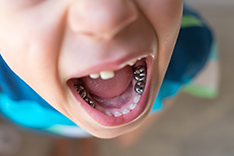 Crowns are a restorative procedure most often used for teeth that have large dental cavities, significant wear from grinding, or loss of tooth structure from trauma. A crown is a “cap” cemented onto an existing tooth that usually covers the portion of the tooth above the gum line. In effect, the crown becomes the tooth’s new outer surface.
Crowns are a restorative procedure most often used for teeth that have large dental cavities, significant wear from grinding, or loss of tooth structure from trauma. A crown is a “cap” cemented onto an existing tooth that usually covers the portion of the tooth above the gum line. In effect, the crown becomes the tooth’s new outer surface.
Pediatric crowns traditionally are made of stainless steel, but we also offer pediatric crowns that are white, particularly for the front teeth and aesthetic areas. Crowns are typically more durable than dental fillings, offering great protection from future dental cavities until the baby tooth is ready to fall out.
Extractions
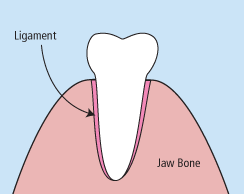 There are times when it is necessary to remove a tooth. Sometimes a baby tooth has misshapen or long roots that prevent it from falling out as it should, and the tooth must be removed to make way for the permanent tooth to erupt. At other times, a tooth may have so much decay that it puts the surrounding teeth at risk of infection, so the doctor may recommend its removal. Orthodontic correction or problems with a wisdom tooth can also require removal of a tooth.
There are times when it is necessary to remove a tooth. Sometimes a baby tooth has misshapen or long roots that prevent it from falling out as it should, and the tooth must be removed to make way for the permanent tooth to erupt. At other times, a tooth may have so much decay that it puts the surrounding teeth at risk of infection, so the doctor may recommend its removal. Orthodontic correction or problems with a wisdom tooth can also require removal of a tooth.
The root of each tooth is encased within the jawbone in a “tooth socket”, and the tooth is held in that socket by a ligament. In order to extract a tooth, the dentist must expand the socket and separate the tooth from the ligament holding it in place. While this procedure is typically very quick, it is important to share with Dr. Colleen any concerns or preferences for sedation.
Fluoride
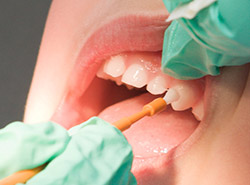 Fluoride is a compound that contains fluorine, a natural element. Fluoride, when used in small amounts on a routine basis, is effective in preventing cavities. Fluoride helps to prevent demineralization of the teeth. That means it makes our teeth less susceptible to acidic breakdown from bacteria and highly acidic foods and beverages. Fluoride also helps to remineralize enamel; it helps to rebuild enamel that has started to weaken or break down. A fluoride application is a quick procedure that may be recommended after each dental cleaning depending on a patient's risk for cavities and exposure to fluoride from other sources (water supply, toothpaste, etc.). After the treatment, your child may be asked not to rinse, eat, or drink for 15-30 minutes in order to allow the teeth to absorb the fluoride.
Fluoride is a compound that contains fluorine, a natural element. Fluoride, when used in small amounts on a routine basis, is effective in preventing cavities. Fluoride helps to prevent demineralization of the teeth. That means it makes our teeth less susceptible to acidic breakdown from bacteria and highly acidic foods and beverages. Fluoride also helps to remineralize enamel; it helps to rebuild enamel that has started to weaken or break down. A fluoride application is a quick procedure that may be recommended after each dental cleaning depending on a patient's risk for cavities and exposure to fluoride from other sources (water supply, toothpaste, etc.). After the treatment, your child may be asked not to rinse, eat, or drink for 15-30 minutes in order to allow the teeth to absorb the fluoride.
Mouthguards
 Dental trauma is extremely common, affecting approximately 25% of children and teens. Whether your child wears braces or not, protecting his or her smile while playing sports is essential. Mouthguards help protect the teeth and gums from injury. The American Dental Association, American Association of Orthodontists, and American Academy of Pediatric Dentistry recommend that children participating in organized or recreational sports wear a mouthguard.
Dental trauma is extremely common, affecting approximately 25% of children and teens. Whether your child wears braces or not, protecting his or her smile while playing sports is essential. Mouthguards help protect the teeth and gums from injury. The American Dental Association, American Association of Orthodontists, and American Academy of Pediatric Dentistry recommend that children participating in organized or recreational sports wear a mouthguard.
Choosing the right mouthguard is essential. There are three basic types of mouthguards: the pre-made mouthguard, the “boil-and-bite” fitted mouthguard, and a custom-made mouthguard. We are proud to offer pre-made mouthguards in office as part of our Shock Doctor Program. This is a great option for children who are still growing or in active orthodontic treatment. We are happy to offer a custom-made option, particularly for our older patients who have completed their orthodontic care. Dr. Mike and Dr. Colleen can show your child how to wear a mouthguard properly and how to choose the right mouthguard to protect his or her smile.
Pulp Therapy
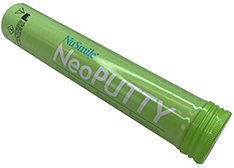
Images courtesy of NuSmile®.
The dental pulp is the tissue found in the roots of teeth. It contains a blood vessel, nerve, and immune cells and gives the tooth "life". When a child has a large cavity that is close to the nerve of the tooth, or trauma that exposes the nerve of the tooth, the tooth may require pulp therapy. The goal of pulp therapy is to keep the tooth alive as long as possible and to reduce pain and sensitivity. This can include placing a protective liner or medicine underneath a deep filling, or placing a bio-compatible material directly over the nerve tissue to promote healing. Though pulp therapy has a very high success rate, it is not 100%. If the tooth continues to experience pain or the nerve inside of the tooth dies, then extraction of the baby tooth or root canal of the permanent tooth may be indicated.
Sealants
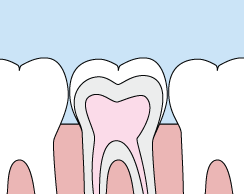 Sometimes brushing is not enough, especially when it comes to those hard-to-reach spots in your child’s mouth. It is difficult for a toothbrush to get in between the small cracks and grooves on your child’s teeth. If left alone, those tiny areas can develop tooth decay. Sealants give your child’s teeth extra protection against decay and help prevent cavities.
Sometimes brushing is not enough, especially when it comes to those hard-to-reach spots in your child’s mouth. It is difficult for a toothbrush to get in between the small cracks and grooves on your child’s teeth. If left alone, those tiny areas can develop tooth decay. Sealants give your child’s teeth extra protection against decay and help prevent cavities.
Dental sealants are made of a resin that bonds and hardens in the deep grooves on the tooth’s surface. When a tooth is sealed, the tiny grooves become smooth and are less likely to harbor plaque. With sealants, brushing your child's teeth becomes easier and more effective against tooth decay.
Sealants are typically applied to children’s teeth as a preventive measure against tooth decay after the permanent teeth have erupted. It is more common to seal “permanent” teeth rather than “baby” teeth, but every patient has unique needs, and Dr. Colleen will recommend sealants on a case-by-case basis.
Sealants may last a few years, but it is fairly common to see adults with sealants still intact from their childhood. A dental sealant only provides protection when it is fully intact, so if your child’s sealants come off, let your dentist know, and schedule an appointment for your child's teeth to be re-sealed.
Icon® Resin Infiltration
Some children experience enamel demineralization or hypomineralization on their teeth. Enamel demineralization is the first stage of the cavity process, resulting in chalky white spots on the teeth. This occurs when oral hygiene and diet are not adequate.
Enamel hypomineralization is a developmental defect of the enamel that is likely due to a mix of environmental and genetic factors. These factors limit the minerals available during tooth development. It can also be caused by an over-exposure to fluoride during tooth development (enamel fluorosis). Teeth may appear chalky and discolored and can impact a child's confidence about his or her smile. Affected teeth can be more sensitive to hot and cold and are at increased risk for cavities and fractures.
Resin infiltration is a minimally invasive treatment technique that can improve the aesthetics of permanent teeth affected by demineralization and hypomineralization. During this procedure, Dr. Colleen cleans the affected teeth and applies a special resin that fills in porous areas of the enamel. This allows the discolored areas to blend in with surrounding healthy tooth structure, improving the aesthetics and providing a barrier to slow down or reduce risk for decay in the future.
![]()